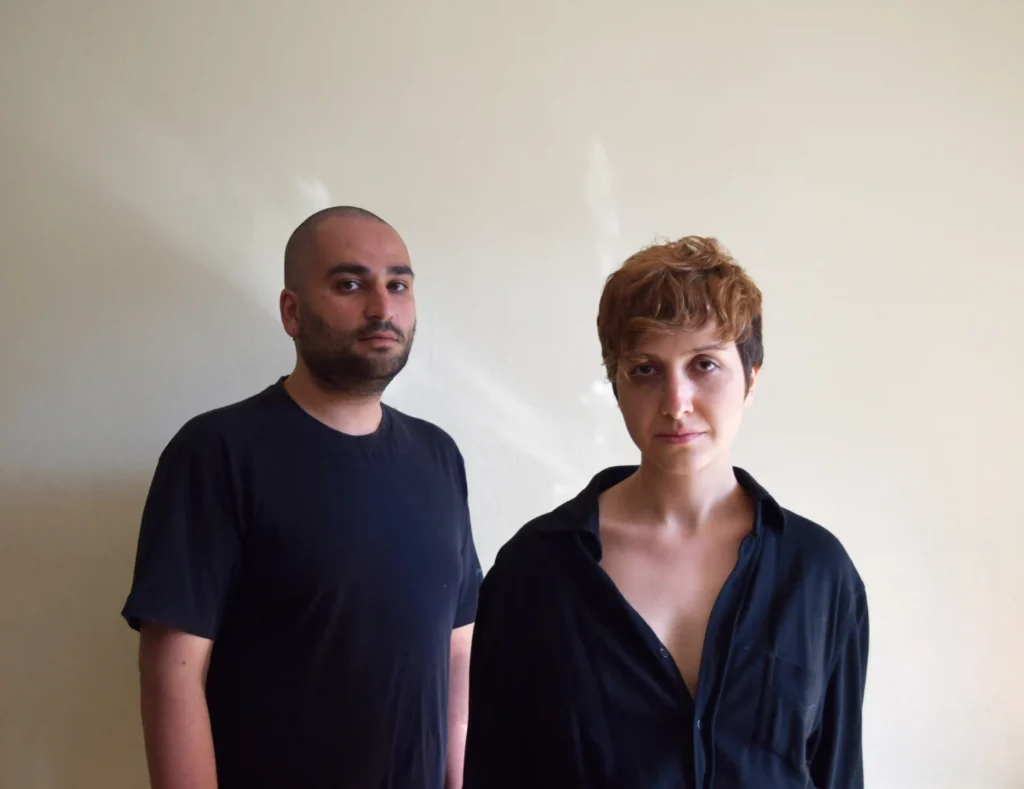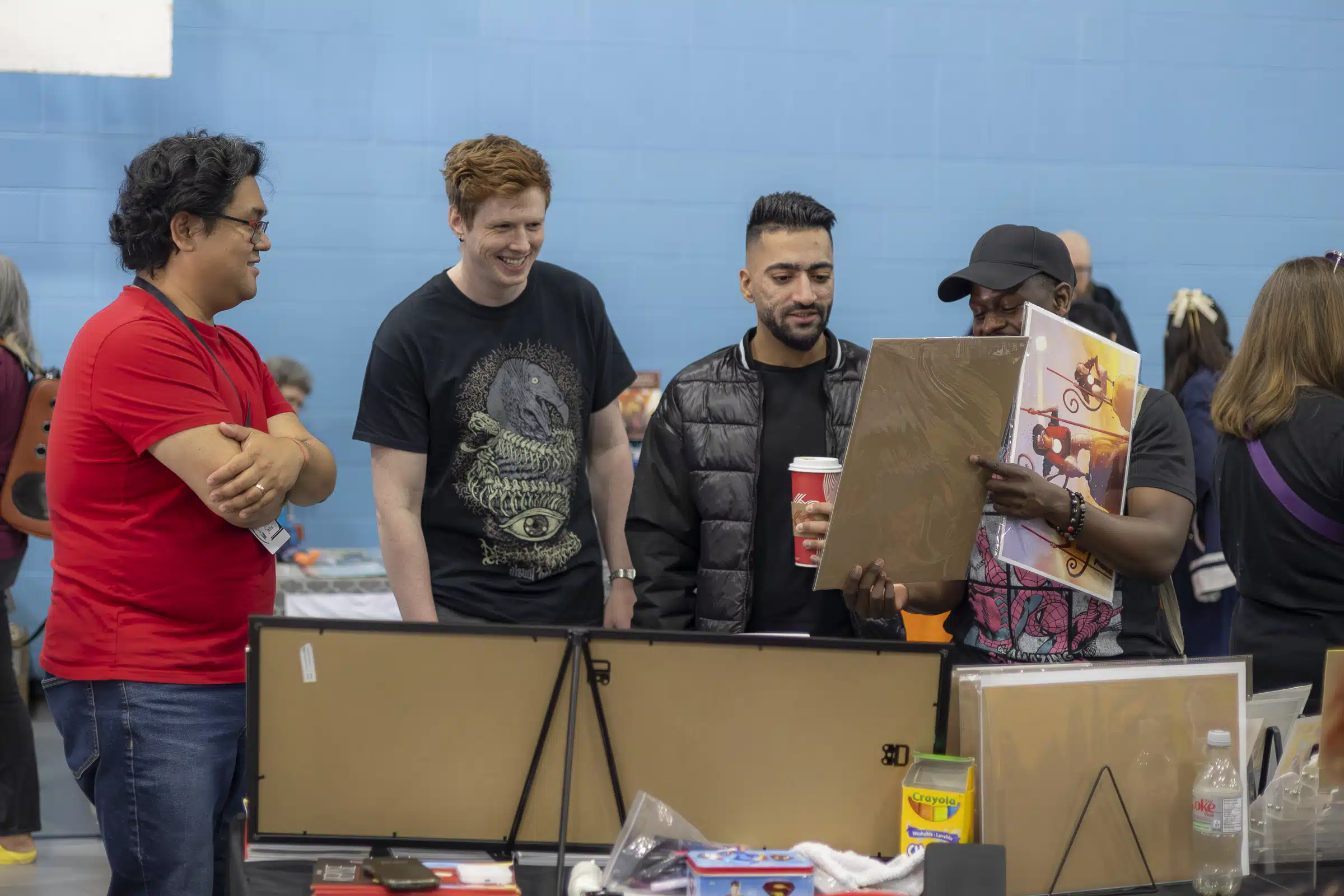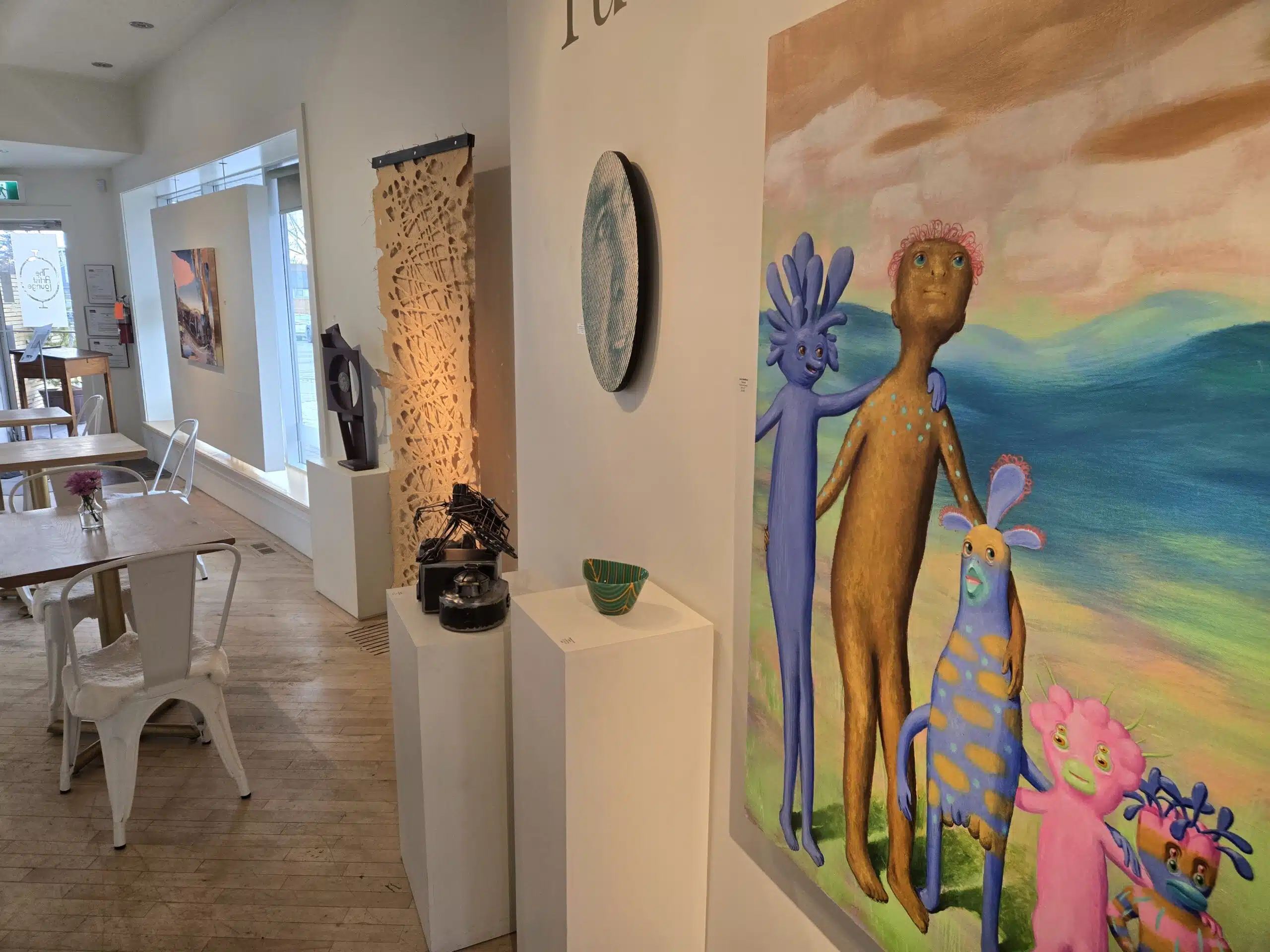Originally from Iran, NUM is an interdisciplinary music duo working at the intersection of technology and human experience. Their practice spans electroacoustic composition, sound art, and multimedia installations.
For Maryam Sirvan and Milad Bagheri, music isn’t born of comfort — it reflects experiences of displacement, bureaucracy, and the pressures of migration. Before moving to Canada in 2021, they presented their work across West Asia and Europe.
Now based in Calgary, they continue to expand their practice, with past performances at Sled Island, Dickens, and Central United Church. They also have an upcoming album in collaboration with Jeremy Brown at Studio Bell.

A LONG JOURNEY
Milad: “We met at a concert where I played. At first, we were mostly covering well-known songs and making some electronic compositions; 2010 marks the start of our original work together.”
Maryam: “Covering wasn’t fulfilling — we needed to create our own sonic universe. So we decided to produce songs together, chose a name, set up social media, and gradually got introduced to electroacoustic and experimental electronic music.”
Milad: “Music is the reason we’re here now. Moving to Canada happened after I received funding to do a master’s at the University of Calgary.
“We needed to be out of Iran. You know the situation — an ideological, complex environment. For example, women are banned from singing in public. We had to leave.
CALGARY ELECTRONIC SCENE
Milad: “The scene for our kind of work is small. Electronic and experimental shows are mostly DIY. You can find stronger scenes in Montreal, Vancouver, and Toronto, but that’s just three cities in a big country.
“Calgary has potential to grow in new [forms of] sound — sonic arts, new media, installations — not just staged concerts. People are very curious; they ask questions and say positive things, but it’s clearly new to many.
“The issue is presentation and support. When budgets are limited, you end up with a cheap PA, poor sound, and venues that don’t suit the work. Our music depends on sound quality, spatialization, and speaker placement. Proper staging would help both artists and audiences experience the work as intended.”
Maryam: “We try not to worry too much about reactions; disappointment is common when expectations meet poor presentation. We want to make this kind of music, regardless of how popular it is. We won’t change toward the market — that’s not who we are.”
MIlad: “Even if the audience is small, we feel motivated to keep going, to find resources, to share what we’re doing. It’s not just for us — we know other artists in Calgary who face the same struggles. If this encourages even one person, it’s worth it.”
‘WE NEVER KNEW EACH OTHER WITHOUT MUSIC’
Maryam: “We always say we’re together because of music — without it, we wouldn’t have come this far. The two things aren’t separate for us. Music is part of our identity as a couple.”
Milad: “Even when we’re upset or down, we play together; it’s like dialogue without words. Making music gives us a shared power. We never knew each other without music.”
Milad: “Technically, we draw heavily from pioneers of electroacoustic music in Europe, especially musique concrète in ‘50s France. Those composers cut and spliced tapes, slowed or reversed sounds, [and] made whole pieces from recordings of birds or field noises. That experimental spirit still inspires us.
“Later, synthesizers made electronic music more commercial, and now people think ‘electronic’ means dance beats — but its origins were very different. We’re influenced by that early freedom.
“Freedom, however, can be both good and challenging: you can start anywhere, but sometimes it’s hard to choose where.”

Maryam: “Sometimes it [a new song] starts from an emotion, sometimes from a technical idea we want to try. But two things are always central: electronics and the human voice.”
Milad: “We also have something we call ‘broken songs’ — they’re pieces with chord progressions and harmony, but warped, so they don’t sound like conventional songs.”
MUSIC AND TECH
Milad: “We’re into technology, and electronic music opens possibilities. We learned to code for sound, and once you code, you start thinking ‘What if sound connects to visuals? What if we make something interactive, give the audience an interface to play along’?”
Maryam: “Technology is human — there’s always a human mind behind the machine. Even with generative music, you program the system; it doesn’t come from the computer by itself. A computer can do things humans can’t, and that opens possibilities.”
Milad: “Experimental music isn’t really a genre — it’s an approach. You experiment to create something new. It’s about freedom and the infinite options you have.”
QUICK TAKES
Musical inspirations: Pierre Schaeffer and Bernard Parmegiani, Tim Hecker, and William Basinski. From the “more common” side: Björk, Radiohead, Portishead, Depeche Mode.
For someone new to sound art:
“Start with a bit of history — how it began and evolved — because listening isn’t always about enjoyment; sometimes it’s about thinking. Begin with more ambient and less harsh tracks to connect, then dive deeper.”
Where to start with NUM’s work— albumsTrilogy for the Light. For the experimental works, False Awakening.
This Q&A was created in collaboration with Werklund Centre.
NUM’s new album, Seas Coming For Me, will be released on November 30 at cSPACE. To learn more about their work, visit: numduo.com.



